Abstract
A 12-month survey on the incidence of campylobacter infection in 1217 patients with diarrhoea was carried out in Jeddah, Saudi Arabia. Campylobacters were isolated from 55 (4.5%) patients, second in prevalence to salmonellas (6.2%). Shigellas were isolated from 4.2% of patients. Campylobacter isolation rates were high in children of all ages, as well as in young adults (36.5% of all isolates were from adults aged 20-39 years). Isolation rates peaked in September and November. Analysis of the results showed that 69% were Campylobacter jejuni (mostly biotype IV) and 31% C. coli. Serogroups 5 and 23 (Penner scheme) and phage type 125 (Preston scheme) were most frequently isolated. Resistance to erythromycin and tetracycline was observed in 7.3 and 32.7% of the isolates. Campylobacters are an important cause of bacterial enteritis in Saudi Arabia, both in adults and in children, and should be sought routinely.
Full text
PDF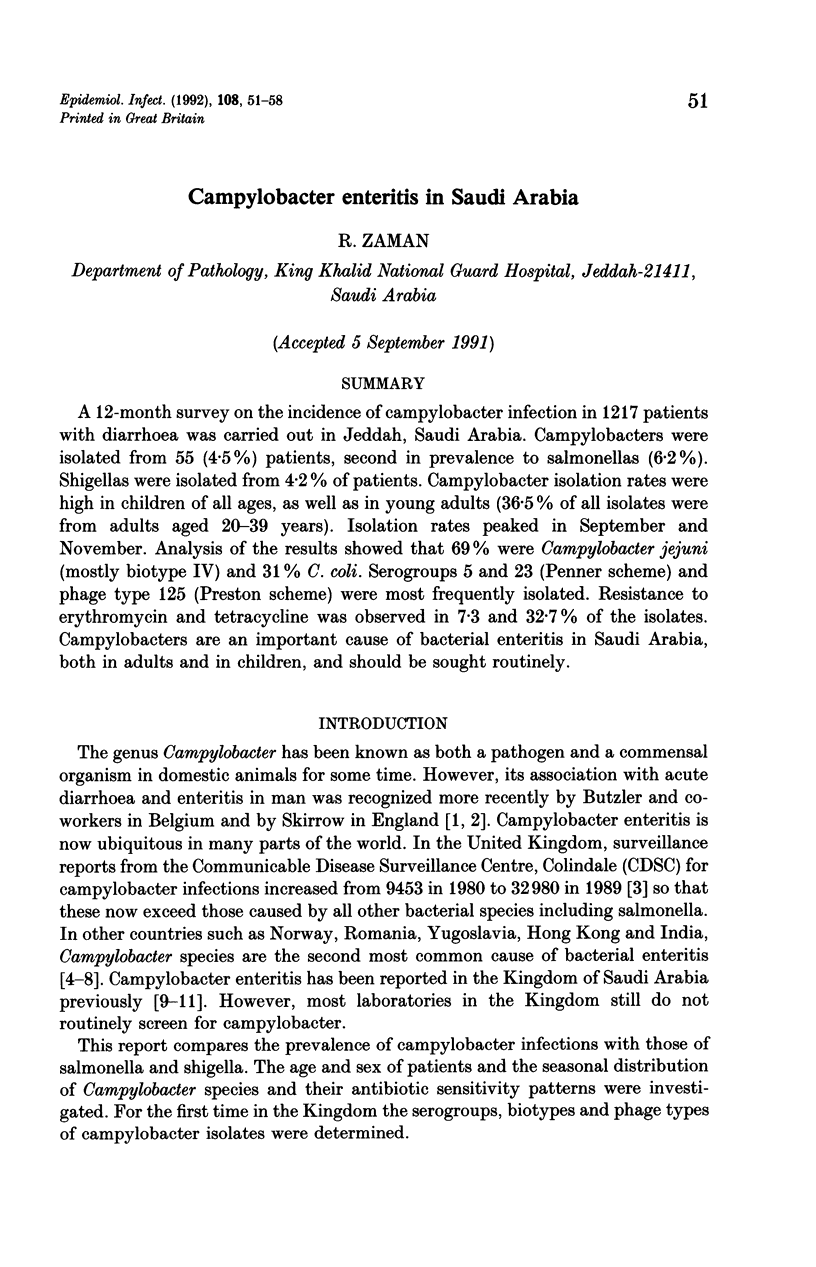
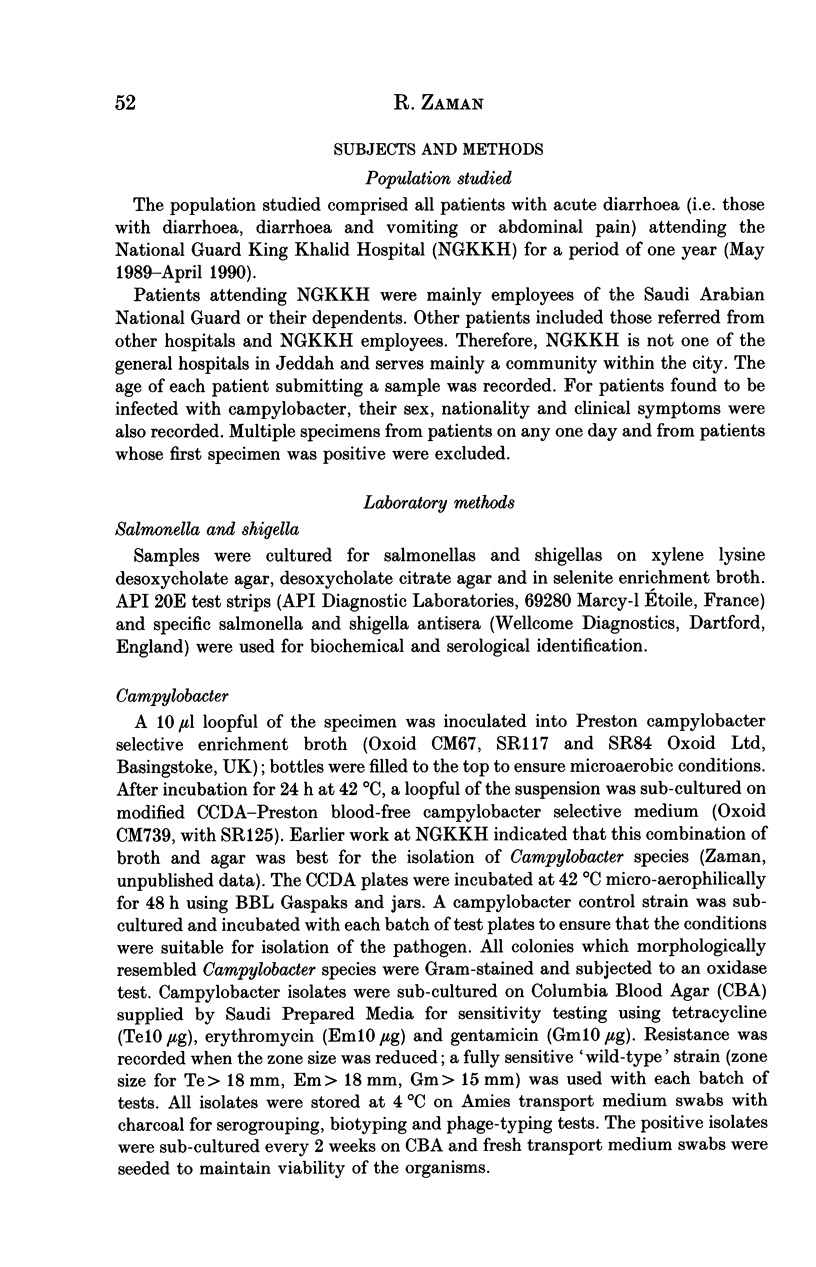
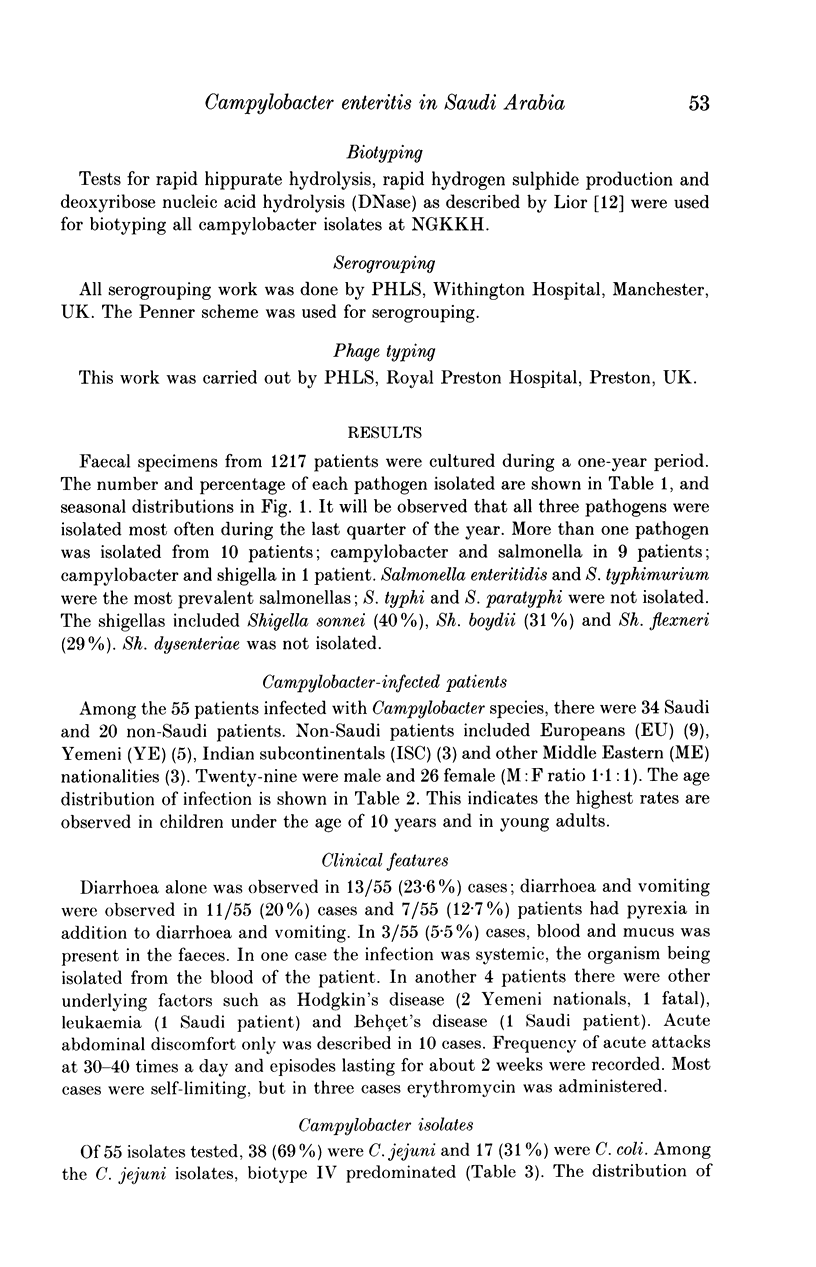
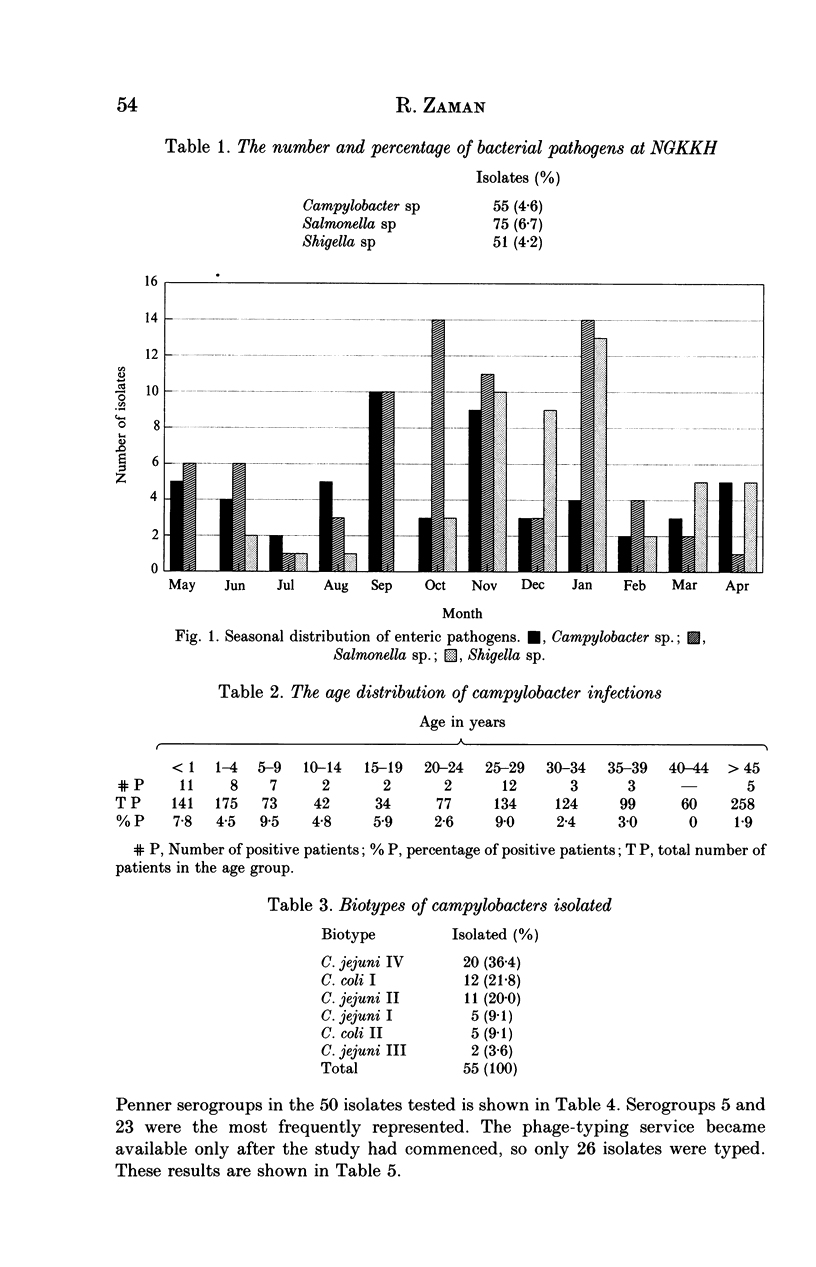
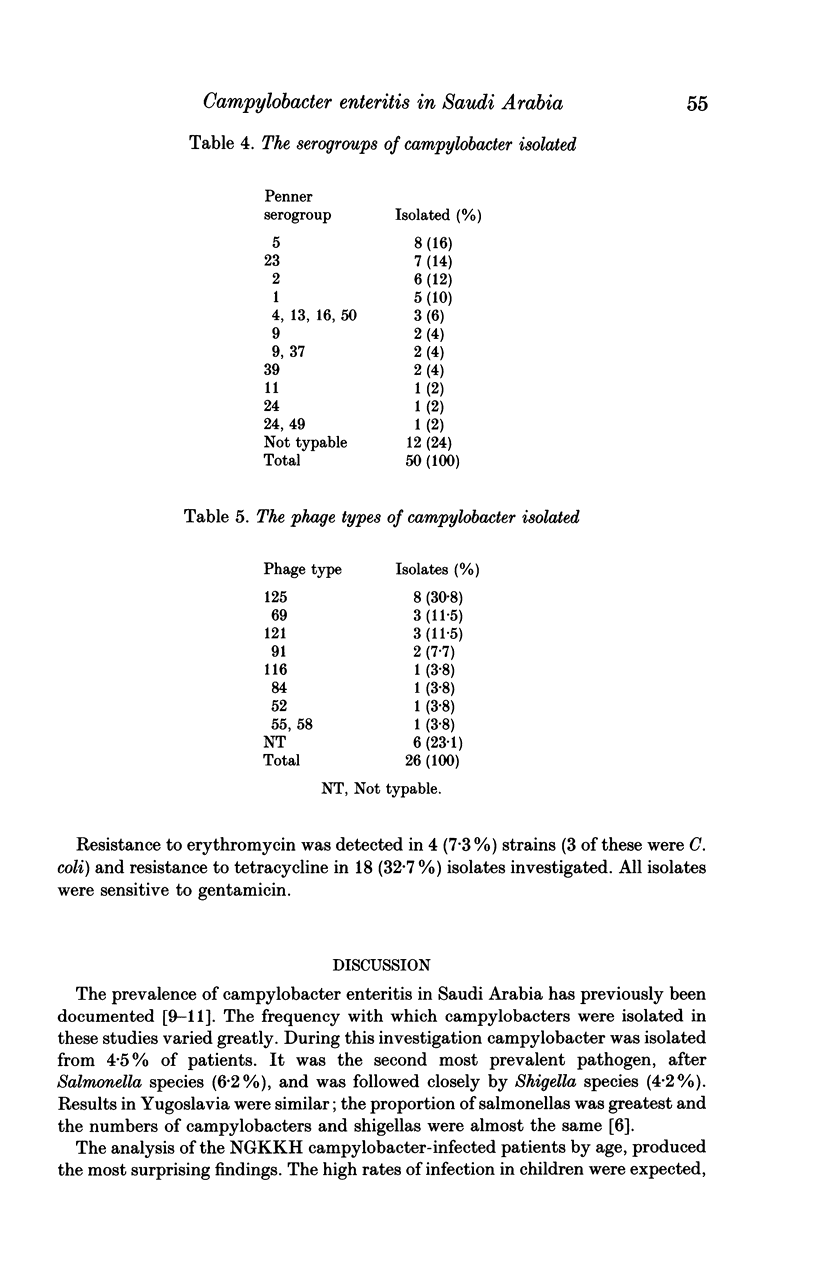
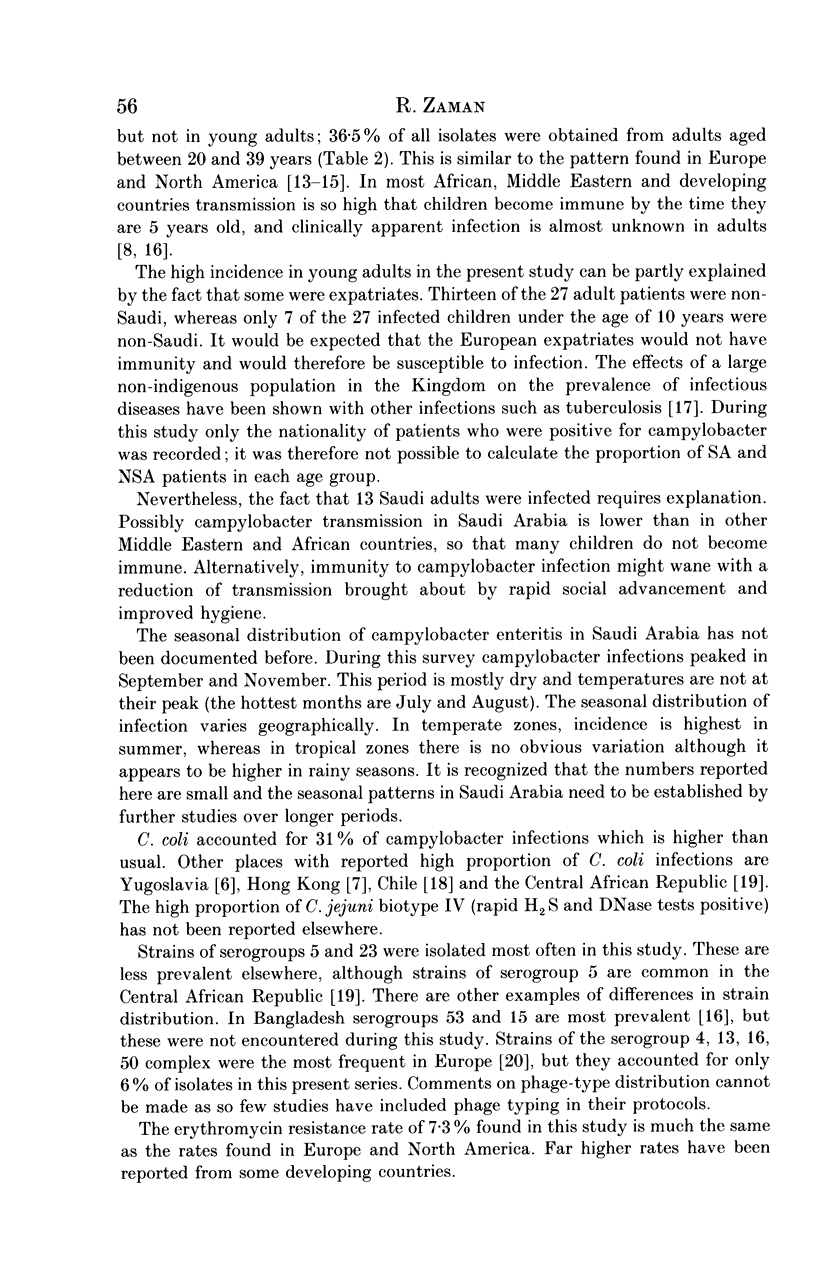
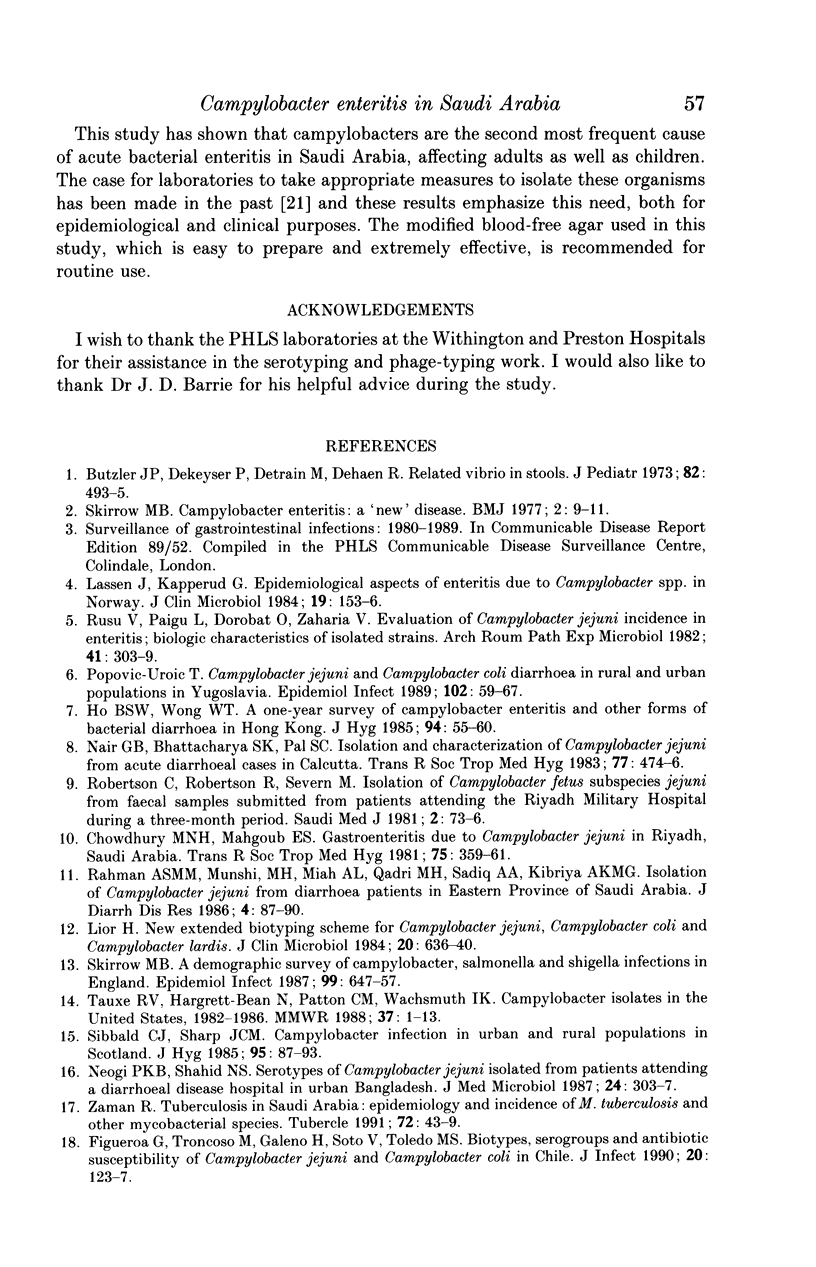
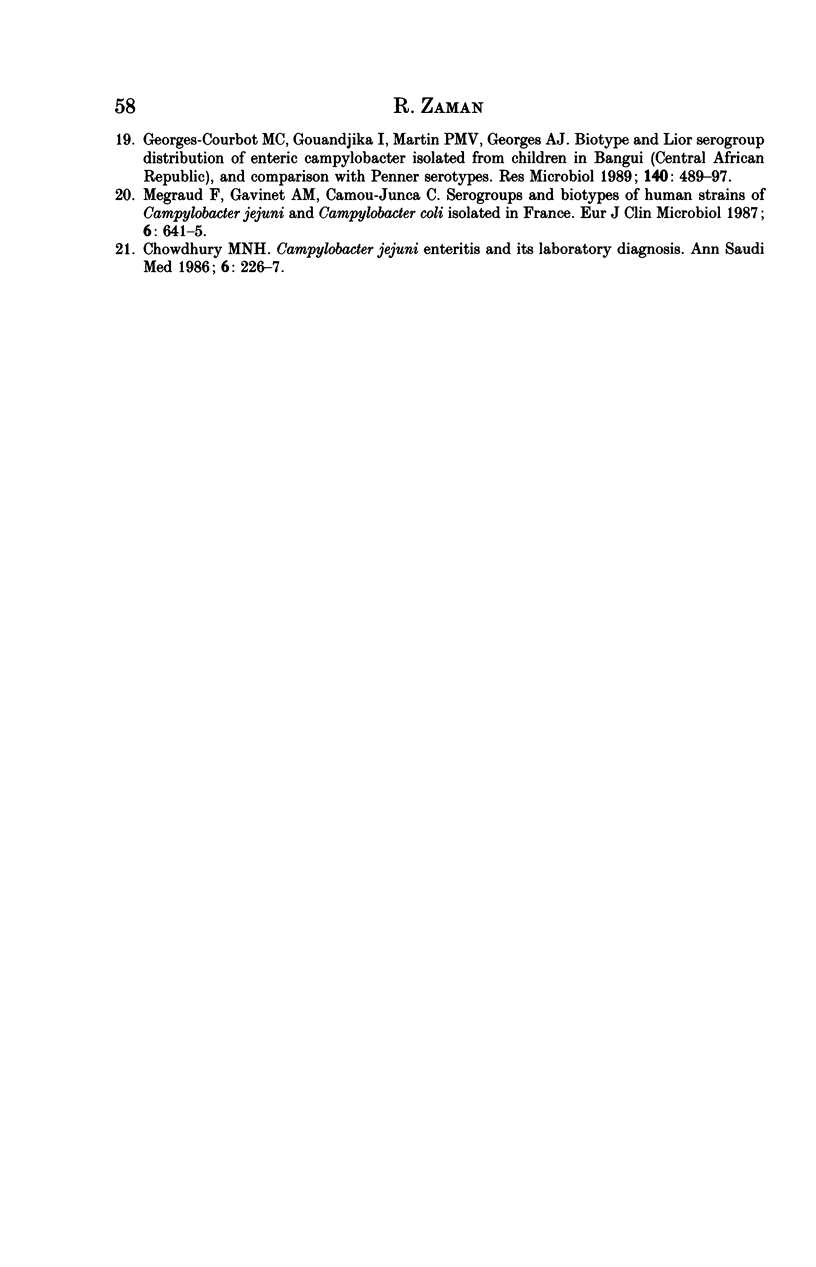
Selected References
These references are in PubMed. This may not be the complete list of references from this article.
- Butzler J. P., Dekeyser P., Detrain M., Dehaen F. Related vibrio in stools. J Pediatr. 1973 Mar;82(3):493–495. doi: 10.1016/s0022-3476(73)80131-3. [DOI] [PubMed] [Google Scholar]
- Chowdhury M. N., Mahgoub E. S. Gastroenteritis due to Campylobacter jejuni in Riyadh, Saudi Arabia. Trans R Soc Trop Med Hyg. 1981;75(3):359–361. doi: 10.1016/0035-9203(81)90092-4. [DOI] [PubMed] [Google Scholar]
- Figueroa G., Troncoso M., Galeno H., Soto V., Toledo M. S. Biotypes, serogroups and antibiotic susceptibility of Campylobacter jejuni and Campylobacter coli in Chile. J Infect. 1990 Mar;20(2):123–127. doi: 10.1016/0163-4453(90)93314-i. [DOI] [PubMed] [Google Scholar]
- Georges-Courbot M. C., Gouandjika I., Martin P. M., Georges A. J. Biotype and Lior serogroup distribution of enteric Campylobacter isolated from children in Bangui (Central African Republic), and comparison with Penner serotypes. Res Microbiol. 1989 Sep;140(7):489–497. doi: 10.1016/0923-2508(89)90070-3. [DOI] [PubMed] [Google Scholar]
- Ho B. S., Wong W. T. A one-year survey of campylobacter enteritis and other forms of bacterial diarrhoea in Hong Kong. J Hyg (Lond) 1985 Feb;94(1):55–60. doi: 10.1017/s002217240006112x. [DOI] [PMC free article] [PubMed] [Google Scholar]
- Lassen J., Kapperud G. Epidemiological aspects of enteritis due to Campylobacter spp. in Norway. J Clin Microbiol. 1984 Feb;19(2):153–156. doi: 10.1128/jcm.19.2.153-156.1984. [DOI] [PMC free article] [PubMed] [Google Scholar]
- Lior H. New, extended biotyping scheme for Campylobacter jejuni, Campylobacter coli, and "Campylobacter laridis". J Clin Microbiol. 1984 Oct;20(4):636–640. doi: 10.1128/jcm.20.4.636-640.1984. [DOI] [PMC free article] [PubMed] [Google Scholar]
- Mégraud F., Gavinet A. M., Camou-Junca C. Serogroups and biotypes of human strains of Campylobacter jejuni and Campylobacter coli isolated in France. Eur J Clin Microbiol. 1987 Dec;6(6):641–645. doi: 10.1007/BF02013060. [DOI] [PubMed] [Google Scholar]
- Nair G. B., Bhattacharya S. K., Pal S. C. Isolation and characterization of Campylobacter jejuni from acute diarrhoeal cases in Calcutta. Trans R Soc Trop Med Hyg. 1983;77(4):474–476. doi: 10.1016/0035-9203(83)90117-7. [DOI] [PubMed] [Google Scholar]
- Neogi P. K., Shahid N. S. Serotypes of Campylobacter jejuni isolated from patients attending a diarrhoeal disease hospital in urban Bangladesh. J Med Microbiol. 1987 Dec;24(4):303–307. doi: 10.1099/00222615-24-4-303. [DOI] [PubMed] [Google Scholar]
- Popović-Uroić T. Campylobacter jejuni and Campylobacter coli diarrhoea in rural and urban populations in Yugoslavia. Epidemiol Infect. 1989 Feb;102(1):59–67. doi: 10.1017/s095026880002968x. [DOI] [PMC free article] [PubMed] [Google Scholar]
- Rahman A. S., Munshi M. H., Miah A. L., Qadri M. H., Sadiq A. A., Kibriya A. K. Isolation of campylobacter jejuni from diarrhoea patients in eastern province of Saudi Arabia. J Diarrhoeal Dis Res. 1986 Jun;4(2):87–90. [PubMed] [Google Scholar]
- Rusu V., Paicu L., Dorobă O., Zaharia V. Evaluation of Campylobacter jejuni incidence in enteritis; biologic characteristics of isolated strains. Arch Roum Pathol Exp Microbiol. 1982 Oct-Dec;41(4):303–309. [PubMed] [Google Scholar]
- Sibbald C. J., Sharp J. C. Campylobacter infection in urban and rural populations in Scotland. J Hyg (Lond) 1985 Aug;95(1):87–93. doi: 10.1017/s0022172400062318. [DOI] [PMC free article] [PubMed] [Google Scholar]
- Skirrow M. B. A demographic survey of campylobacter, salmonella and shigella infections in England. A Public Health Laboratory Service Survey. Epidemiol Infect. 1987 Dec;99(3):647–657. doi: 10.1017/s0950268800066504. [DOI] [PMC free article] [PubMed] [Google Scholar]
- Skirrow M. B. Campylobacter enteritis: a "new" disease. Br Med J. 1977 Jul 2;2(6078):9–11. doi: 10.1136/bmj.2.6078.9. [DOI] [PMC free article] [PubMed] [Google Scholar]
- Tauxe R. V., Hargrett-Bean N., Patton C. M., Wachsmuth I. K. Campylobacter isolates in the United States, 1982-1986. MMWR CDC Surveill Summ. 1988 Jun;37(2):1–13. [PubMed] [Google Scholar]
- Zaman R. Tuberculosis in Saudi Arabia: epidemiology and incidence of Mycobacterium tuberculosis and other mycobacterial species. Tubercle. 1991 Mar;72(1):43–49. doi: 10.1016/0041-3879(91)90023-l. [DOI] [PubMed] [Google Scholar]


